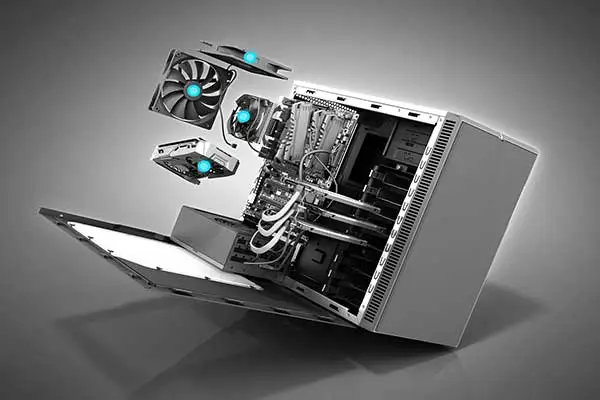

A cooling fan for a computer case is an essential component that helps maintain optimal temperatures within a computer system. As computers perform complex tasks, they generate heat, which, if not properly managed, can lead to hardware malfunctions or reduced performance. Cooling fans are designed to dissipate this heat, ensuring that the internal components, such as the CPU, GPU, and motherboard, operate within safe temperature ranges. This not only prolongs the lifespan of the components but also enhances the overall performance and stability of the system.

There are several types of cooling fans available for computer cases, each with its own set of features and benefits. The most common types include:
Axial Fans: These are the most widely used fans in computer cases. They are designed to move air parallel to the axis of the fan, providing efficient cooling for general purposes. Axial fans are available in various sizes, typically ranging from 80mm to 140mm, and can be installed in different locations within the case.
Blower Fans: Unlike axial fans, blower fans push air perpendicular to the intake, making them ideal for cooling specific components like GPUs. They are often used in compact cases where space is limited, as they can direct airflow more precisely.
Radiator Fans: These fans are specifically designed for use with liquid cooling systems. They are optimized to work with radiators, providing high static pressure to push air through the dense fins of the radiator, effectively dissipating heat from the liquid coolant.
Selecting the right cooling fan for your computer case involves considering several factors. First, determine the size of the fan that your case can accommodate. Larger fans generally move more air and can operate at lower speeds, reducing noise levels. Next, consider the airflow and static pressure ratings. High airflow fans are suitable for general case ventilation, while high static pressure fans are better for cooling components with restricted airflow, such as radiators or heatsinks. Additionally, pay attention to the noise levels, measured in decibels (dB), to ensure a quiet computing environment. Finally, look for features like PWM (Pulse Width Modulation) support, which allows for dynamic speed control based on the system’s temperature, and RGB lighting, if aesthetics are important to you. By carefully evaluating these factors, you can choose a cooling fan that meets your specific needs and enhances your computer’s performance and longevity.